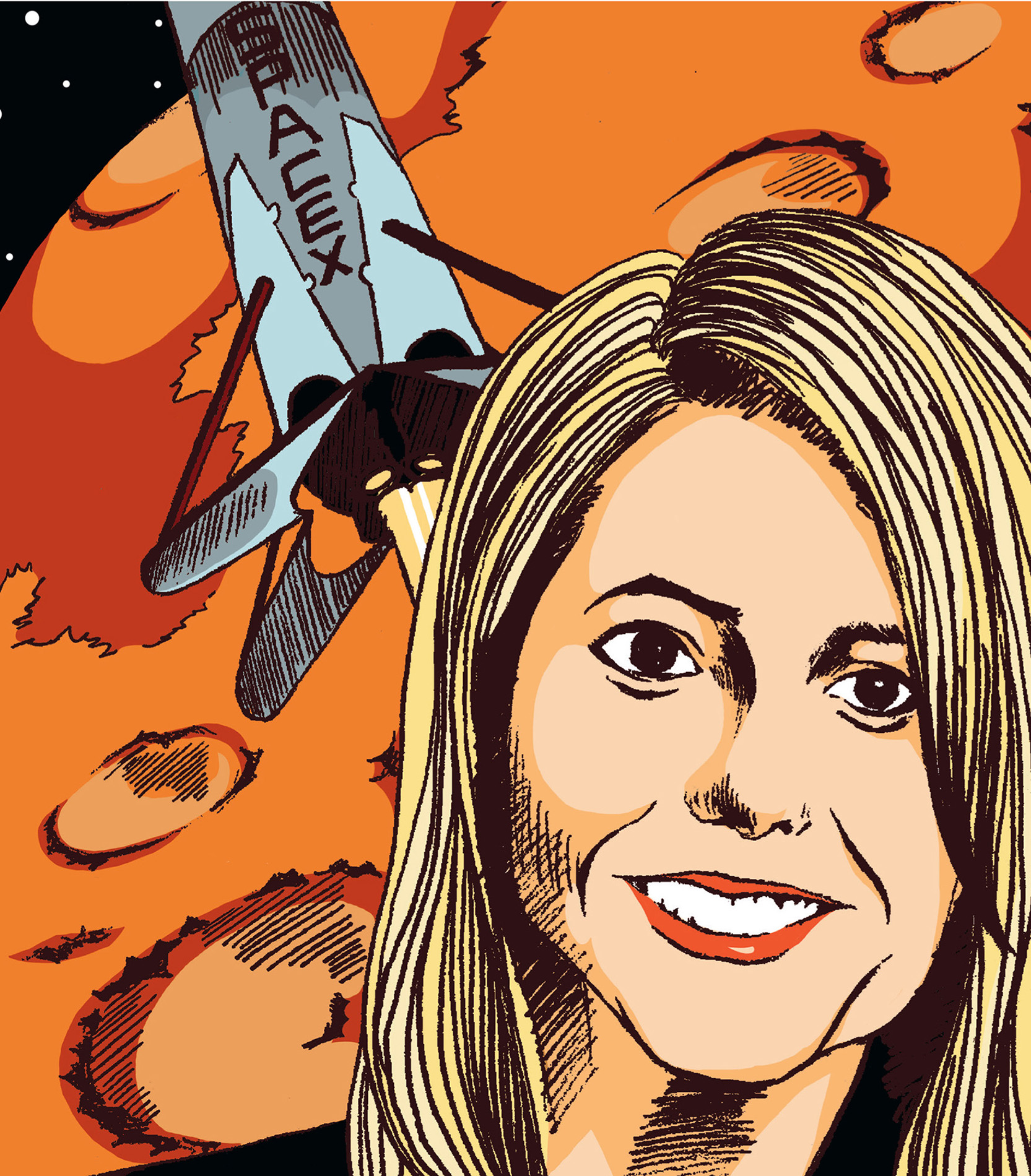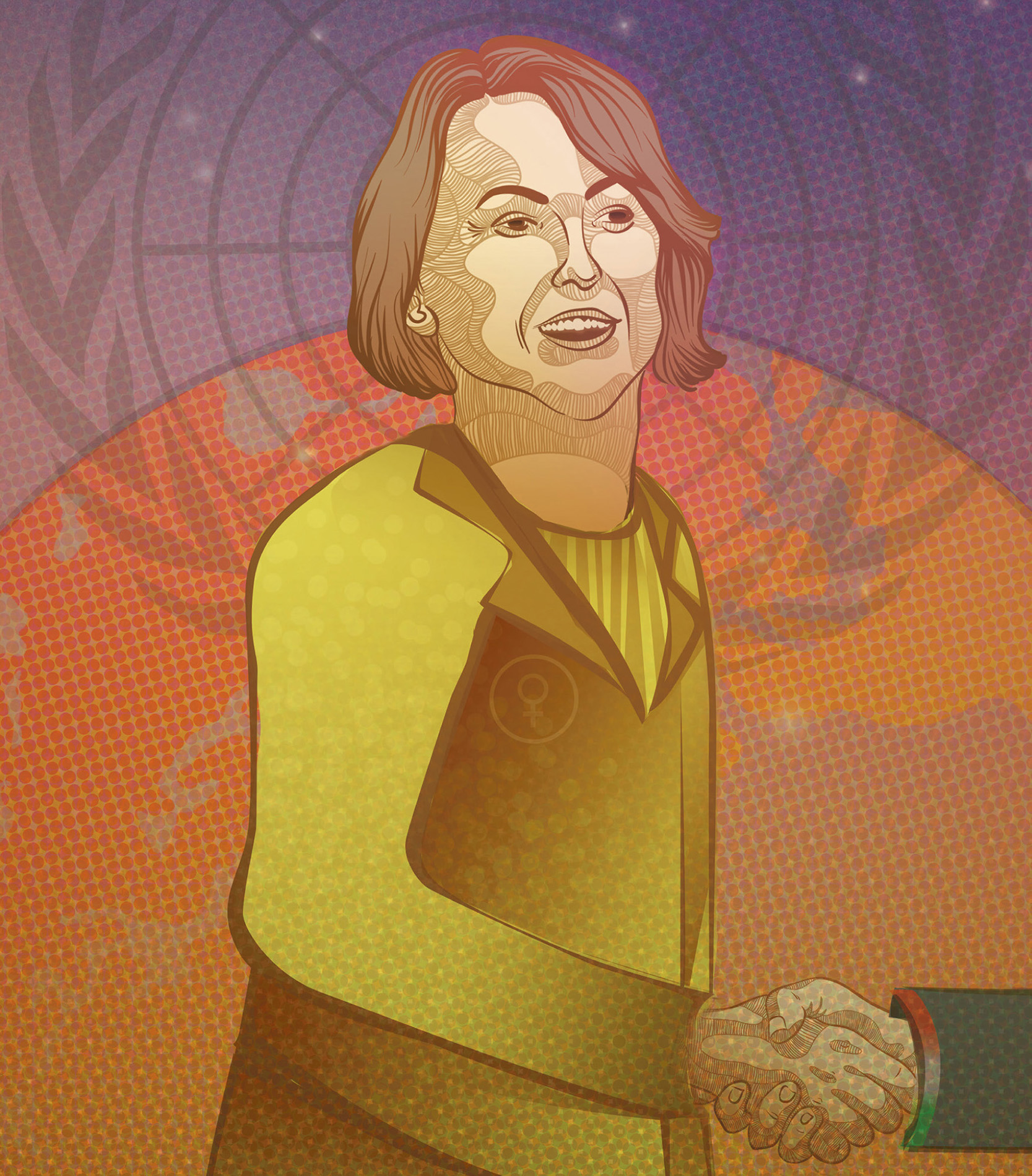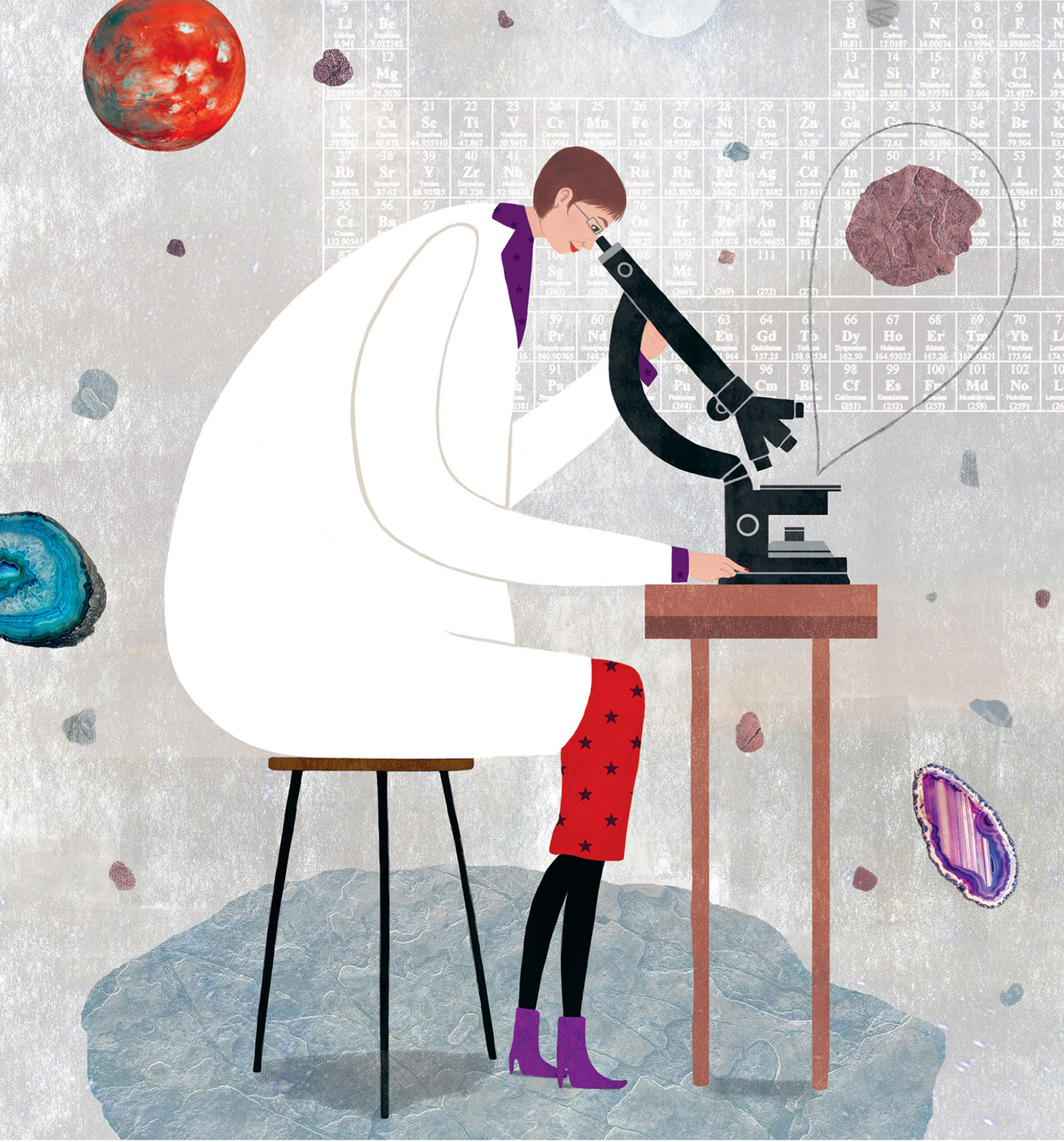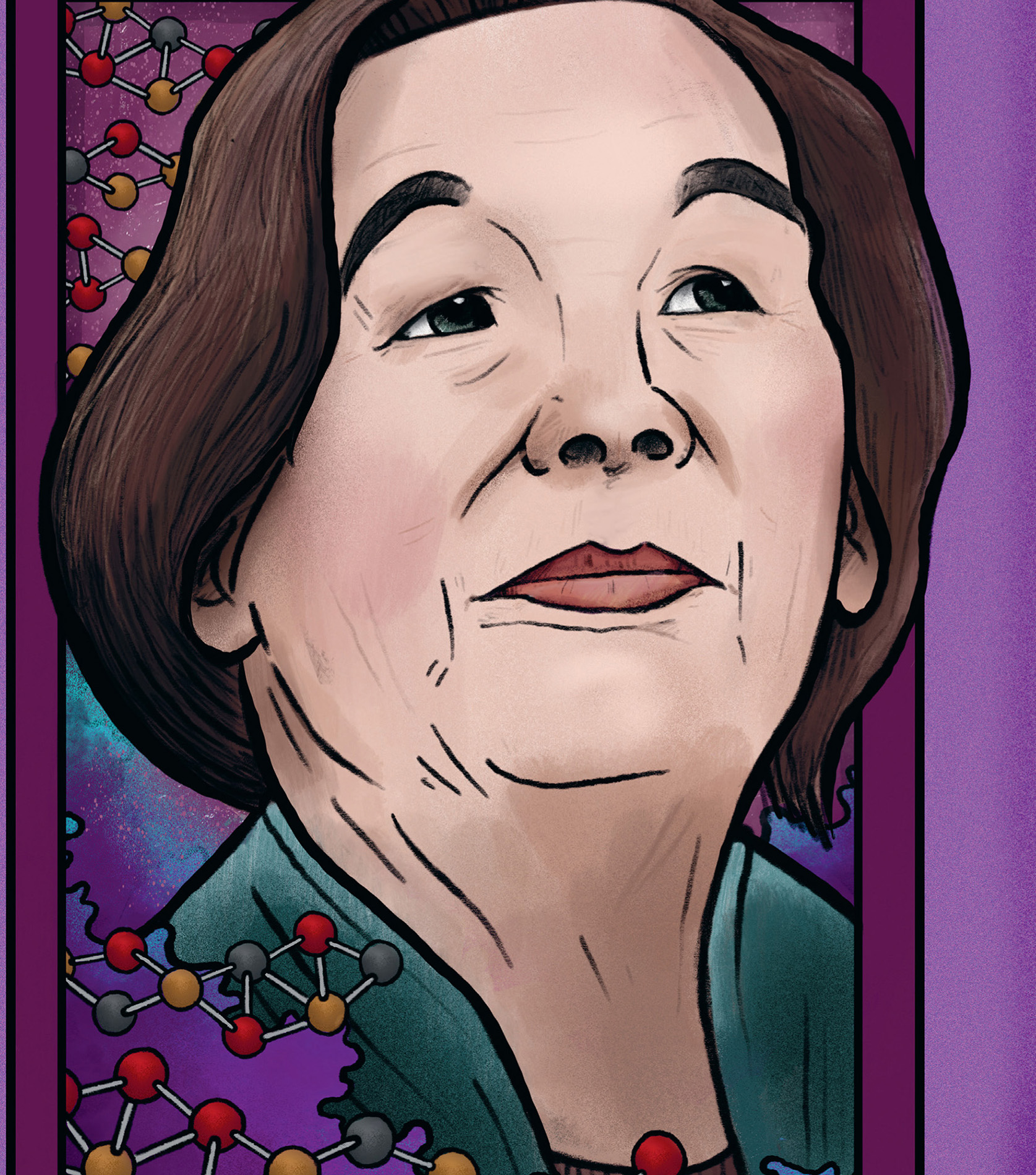

Space is changing. Private companies are developing new vehicles to take fare-paying passengers on out-of-this-world journeys. The International Space Station is getting older and will eventually be retired and perhaps replaced, and China are planning their own outpost in the coming years. Space agencies and others are working on plans to send humans away from the relative safety and security of Earth orbit, perhaps back to the Moon and then on to Mars, searching for evidence of life on the Red Planet and proof that we are not alone in the universe.

LIU YANG |
WANG YAPING |
 PILOT PILOT  TAIKONAUT TAIKONAUT |
 PILOT PILOT  TAIKONAUT TAIKONAUT |
|
|
Liu Yang and Wang Yaping, the first female taikonauts, or Chinese astronauts, are leading the way in a new chapter of space exploration. Since the flights of Yuri Gagarin and Alan Shepard in 1961, hundreds of people have flown in space, but until 2003 all had been in American and Russian rockets and spacecraft. China then joined them with the flight of Shenzhou 5.
Liu and Wang were both military pilots who were selected in China’s second group of taikonauts. The selection process was incredibly rigorous, demanding superhuman-like levels of perfection, and not only fitness, courage and the ability to work well in a team, but also no physical scars, snoring or strong accents.
After they and the rest of their class were selected, the strict training was conducted in great secrecy. Their names were not announced and only their parents knew they were planning to go to space. Some brilliant detective work was carried out by people outside China when a signed postcard was found for sale – a commemorative item that had accidentally been released early, and revealed the seven names of those in training.
A few months before Shenzhou 9 was due to blast off, China announced that the three-person crew would include China’s first woman in space, but did not say whether it would be Wang or Liu. It was only on the day before launch, 16 June 2012, that they confirmed to the world it would be Liu Yang. She and her crew mates, Jing Haipeng and Liu Wang, were the first people to visit China’s small space station, Tiangong-1. They stayed there for eight days, performing experiments and testing out the new laboratory.
Wang Yaping flew to Tiangong-1 a year later. During her fifteen days there, she delivered China’s first live science lesson from space, broadcasting to 60 million children across the country. She showed how different objects behave in the weightless environment, and confirmed that she hadn’t seen any UFOs.
China have big ambitions for their growing space programme, having already put a second small station, Tiangong-2, in orbit and flown a cargo ship to it. There are plans for a bigger space station, to send a robot to the Moon to bring back some rocks, and one day to send taikonauts to the Moon and Mars. It is not known if Liu or Wang will journey into space again but they have shown that women can play a vital part in China’s missions.

 TEST PILOT
TEST PILOT
 USA BORN 1964 →
USA BORN 1964 →
Kelly Latimer never makes a flight without being prepared and having a plan. When her life plan went off course she didn’t give up and the outcome was unexpectedly positive.
For as long as she can remember, Kelly wanted to be an astronaut. When she was at school she did lots of research and found out that most astronauts have been military test pilots so she set her sights on attending the military academy. Having only been a passenger on a commercial flight a couple of times, she assumed her parents would think she was crazy, so applied in secret. Only when she was called for a medical and needed their help to get there did she tell them. Happily, they were really excited and supportive.
Kelly was successful and in 1983 headed to US Air Force Academy. When at the end of the first year she started learning to fly, she worried and thought, ‘I really hope I like this – I’ve planned my whole career on it.’ As soon as she took the controls on her first solo flight she knew she had made the right choice.
After graduation she headed to the US Air Force Test Pilot School, and was one of the first handful of women to become a test pilot. As soon as she could, she applied to be an astronaut. She made it through to the last thirty-five candidates, but in the end wasn’t hired. Naturally, she was upset but she didn’t give up. Four years later, Kelly applied again, but when she failed to pass the medical tests for an extended stay in space, she knew her dream was over. She had to accept that she would never be an astronaut.
Years later, Virgin Galactic were looking to hire test pilots to fly their first commercial spacecraft, SpaceShipTwo, which will take fare-paying passengers on a sub-orbital rocket trip into space and back. Out of the blue, Kelly got a phone call. This time she passed the medical tests and now her dream of going to space is alive again, and even better. She is currently a test pilot for the carrier aircraft which will take SpaceShipTwo high up into the atmosphere and in the coming years will qualify to fly SpaceShipTwo as well.
Not only will Kelly go into space herself, she will also get to take other people up who, just like her, have dreamt of space. She cannot wait to feel the acceleration when the rocket fires, and then the sudden cut-off and weightlessness, looking back at Earth. Kelly’s plan is working out after all.

 ENGINEER
ENGINEER  COMPANY PRESIDENT
COMPANY PRESIDENT
 USA BORN 1963 →
USA BORN 1963 →
At school Gwynne Shotwell loved maths and science and finding out how things worked. She thought about a career in engineering but was afraid that she would be called a nerd as it wasn’t cool. One day her mother took her to an event where she met a mechanical engineer who owned her own business and Gwynne saw that she was a brilliant person. She realised that being a female engineer wasn’t at all a strange thing to do, and she has spent her career doing some very cool things.
Gwynne has worked in the space business ever since she left university, starting off as an engineer and then taking on management roles. In 2002 she joined SpaceX, a young company with big goals to develop new rockets and spacecraft, when they were still tiny and just six years later became their president.
Gwynne’s role is to be responsible for all the day-to-day operations, using her engineering skills as a manager. SpaceX are developing new rockets and spacecraft which will soon be ferrying crew to the International Space Station, but they are planning on going further. They have announced plans to send humans to lunar orbit and hope one day to send humans to Mars.
As SpaceX have developed new rockets, they have had to invent all sorts of new technologies; they knew this would not be easy, but they weren’t afraid to give it a go. They have tested things over and over again, even when they suspect that they will not succeed. Sometimes their tests do end in failures, but they learn a lot from these and improve their designs as a result. As leader of SpaceX, Gwynne constantly pushes her team forward. Even when their new technology for landing rocket stages had had five good tests, Gwynne still said, ‘Come on, we’re not pushing hard enough,’ knowing that perhaps they were playing it safe and that there was still more to learn.
SpaceX are revolutionising the world of space travel. They have managed to fly the first stages of their rocket back to Earth and carry out a pinpoint landing on a target on a barge in the middle of the ocean, a bit like trying to stand a pencil on its flat end. This is driving down the cost of rocket launches, which means that space travel should get cheaper and more accessible to all. Gwynne is pushing SpaceX hard so that in the not-too-distant future you will be able to buy a ticket and go into space yourself.

 GEOLOGIST
GEOLOGIST
 SOUTH AFRICA
SOUTH AFRICA  UNITED KINGDOM
UNITED KINGDOM  FRANCE BORN 1955 →
FRANCE BORN 1955 →
Frances Westall is a geologist who has spent her life studying the oldest known rocks on Earth, looking at the evidence of tiny beings that once lived in them. She has also been investigating the possibility of tiny beings in even more unexpected places.
Ever since people first thought about going into space, one destination has always held a great fascination: Mars. It is similar to Earth in some respects, nearby, and for centuries we have wondered if there is life there. Spacecraft first started visiting Mars in the 1960s and though we know there are no little green men, scientists still think there could have been primitive life forms there, and maybe there still are somewhere under the surface.
Currently, the Earth is the only place we know of in the whole universe that supports life, but we also know that the universe is unimaginably large. Our Sun is one of about 100 billion stars in our galaxy, and astronomers estimate that there are at least 100 billion galaxies in the universe. Most scientists think this means that somewhere out there, at some point, life has evolved in one form or another. Finding evidence of that will change the way we think of our beautiful blue and green planet – and one of the places we can look is Mars.
In the beginning the Red Planet was much more similar to Earth than it is today, but scientists think that about 3.5 billion years ago the surface of Mars became inhospitable. Life might, however, have survived underground by extracting nutrients from the rocks, just as some creatures on Earth do today. Frances has studied fossilised bacteria, the oldest known form of life on Earth. She has done lots of experiments to show how these life forms can be preserved in their underground habitat, and has looked at rocks to find out what early life was like and might be like on Mars.
Frances is one of the scientists working on the European Space Agency’s ExoMars rover, due to head to the Red Planet in 2020. It will use a drill to search for signs of life. She will be analysing the data very carefully – but to really use her skills she would like to study the rocks herself. She is looking forward to the day when samples of Martian rock can be brought back by robots or even humans, and maybe she will find evidence that life has evolved somewhere other than Earth.

 ASTROPHYSICIST
ASTROPHYSICIST
 ITALY BORN 1959 →
ITALY BORN 1959 →
Simonetta di Pippo’s passion has always been space. She remembers watching the Moon landings when she was young, and found humankind’s ability to escape the limits of Earth very inspiring. Throughout her life she has been on the lookout for jobs that enable her to keep her passion alive.
Simonetta studied astrophysics at university and found herself working for the newly formed Italian Space Agency (Agenzia Spaziale Italiana, ASI). She has spent her career in the international aspects of space, working with different countries, including being in charge of human space flight for the ASI and then the European Space Agency (ESA). All of this prepared her well for her current post as director of the United Nations Office for Outer Space Affairs (UNOOSA).
UNOOSA encourages better international cooperation in space activities. Simonetta works tirelessly to help countries see how space can benefit humanity. By working together and using space for peaceful purposes, we can tackle some of today’s challenges such as climate change, energy creation and natural resources management.
UNOOSA also works to ensure that countries uphold the five international space treaties which set out the peaceful use of space. As different nationalities start making plans to explore the solar system again, these will be very important. One of the articles states that any exploration done by humans must avoid harmful contamination, so we do not introduce any diseases that could ruin a planet’s natural habitat.
Scientists agree that we should preserve the record of history that exists on other planets and not introduce life from Earth that might destroy or weaken any potential life there. Agencies around the world have worked together to write rules about making spacecraft free from anything potentially harmful. Any craft landing on Mars must be sterilised to remove microbes, and if it is going to a region where there might have been life the standards are even more stringent. However, if humans were to visit Mars, it could be extremely difficult to avoid contaminating the planet with Earth life, which raises the question of whether we should even send humans there, especially if we are trying to find signs of life.
Simonetta’s work keeps planets protected and space peaceful; it even tackles issues here on Earth. She also strives to help other women find their place in space science. She set up and is president of an organisation called Women in Aerospace Europe, devoted to improving representation of women in aerospace and helping the youngest find their own career paths.

 GEOLOGIST
GEOLOGIST  PLANETARY SCIENTIST
PLANETARY SCIENTIST
 USA BORN 1961 →
USA BORN 1961 →
Ellen Stofan went to see her first rocket launch aged just four. She watched as it exploded on the launch pad in a terrifying blast of power and flame, which, she says, is probably why she never wanted to be an astronaut. Instead she wanted to be an archaeologist, but one day her mother took her to a course she was studying on geology. Ellen was hooked, picking up rocks and looking to see what they could tell her. As she got older, she learnt that you could study rocks from other planets. She knew that was what she wanted to do.
Ellen has had an amazing career, focusing on the geology of Venus, Saturn’s moon Titan, Earth and Mars. By studying the other planets in our solar system, scientists can understand more about how the Earth works; the ozone hole was first found by scientists mostly studying Venus. Ellen was appointed as NASA’s chief scientist in 2013, so she really knows her stuff, and during her time in the post she was key to developing long-term plans for getting humans to Mars.
This international task is being planned now, with the first steps already in place. Astronauts on the International Space Station are testing technology such as how to recycle urine into water and how to grow plants there. Recent Mars rovers have collected data about radiation, which is critical to understand if we are going to send humans there. Worldwide space agencies are working together on plans to put a small space station into orbit between the Earth and the Moon, where the science and technology needed for sending humans to Mars can be explored and tested. NASA and the European Space Agency are building the Orion spacecraft, which will one day be able to take humans on long missions. Together, the agencies plan to send humans to Mars in the 2030s.
Why send humans at all? We’ve sent rovers in the past and continue to do so; they are cheap and easy to fly. But Ellen is convinced we need to send scientists to Mars. Humans can read a landscape in detail, observe and reason, and work much more quickly than robots. They can select the right rocks to bring back to a lab, choose which investigations to do there and try to find the answers. Only by sending humans, Ellen believes, will we be able to definitively answer the question of whether there is, or has been, life on Mars.

 SPACE SCIENTIST
SPACE SCIENTIST
 UNITED KINGDOM BORN 1958 →
UNITED KINGDOM BORN 1958 →
Monica Grady grew up in Leeds and spent her weekends in the Yorkshire Dales, looking at the part rocks played in the history of its beautiful landscape.
Her interest in rocks led her to study chemistry and geology, as part of which she examined some of the Apollo Moon rocks – 2,415 samples brought back from the six Apollo missions that landed on the Moon between 1969 and 1972.
Monica thinks that the Moon rocks are extremely beautiful. When geologists study rocks, they take a thin slice and polish it, so that under a microscope they can see what it is made from. Those from Earth are cracked, broken and rusty coloured, where they have been battered by the wind and rain. The Moon is a very different place, with no atmosphere and no weather, and the surface has remained the same for most of its 4.5-billion-year life. The only changes are the craters formed by rocks that hit the Moon after hurtling through space. When Monica looked at thin slices of Moon rock she saw that they were deep and clear, full of bright colours – cerise, turquoise, pink, yellow, grey – with sharp outlines telling of their origins.
Monica has become a leading expert in meteorites, particularly those from Mars. Rocks travelling through space rain down on the Earth all the time, mostly from the asteroid belt. Small ones burn up in the atmosphere, which we see as shooting stars. Bigger ones which make it all the way to the surface of the Earth are called meteorites. Every few million years a large object, several kilometres in diameter, crashes into Mars, forming a huge crater and scattering rocks. Some of these are flung out into space, and slowly, many millions of years later, they hit the Earth, having survived the fiery plunge through the atmosphere. Monica is enraptured by these – of a meteorite she says, ‘If I break it open, it’s thousands of million years old; no one else has ever seen it and it tells you about the history of the solar system.’
For years Monica curated the UK’s collection of meteorites at the Natural History Museum, and is now working to make a place to store rock samples that will be brought back to Earth by future robots exploring the Moon, Mars or asteroids.
Monica has had an asteroid named after her in recognition of her brilliant work. Luckily for us though, it’s in a stable part of the asteroid belt and is very unlikely to become a meteorite and come anywhere near Earth.

 SCIENTIST
SCIENTIST  ASTROBIOLOGIST
ASTROBIOLOGIST
 GERMANY BORN 1939 →
GERMANY BORN 1939 →
Gerda Horneck has always been at the forefront of scientific discovery, looking at science that others thought was just the stuff of fantasy. As technology develops we get closer to making fantasies into realities, to reaching planets we thought might be beyond our reach, and Gerda has helped to drive this big leap forwards.
When she was a student, the idea that perhaps the first tiny organisms had come to Earth on a meteorite from another planet was difficult to believe. But the possibility of little hitch-hikers from faraway planets fascinated her. Gerda has spent much of her career looking at how all forms of life cope with being in space.
Life on Earth is protected from harsh cosmic and solar radiation by the planet’s magnetic field. This deflects harmful particles that come streaming towards us from the Sun and other sources outside the solar system. But beyond the reaches of this protective bubble, several thousand kilometres above the surface of the Earth, there are much higher levels of radiation that can be lethal to humans.
For future astronauts travelling to Mars, this is a problem. With current technology the journey takes about nine months and once you reach Mars, you have to stay for about six months before turning for home, while the planets line up again in their orbits around the Sun. Mars doesn’t have a magnetic field like the Earth, and though the atmosphere provides some shielding, the radiation levels are about 100 times greater than those on Earth. Scientists and engineers around the world are working on inventing materials to protect astronauts from these harmful rays.
Many people thought it was impossible for any living thing to survive in the harsh environment of space. Gerda was one of the pioneers in measuring the heat and radiation and their effects on living organisms. One of her experiments put samples of bacteria, fungi and ferns in a container on the outside of the International Space Station for almost two years, to see what happened and whether these organisms might survive on a meteorite travelling through space. Some did.
Gerda has contributed so much to her field that she has had a bacteria named after her, Bacillus horneckiae, in honour of all her achievements. Her work has helped people understand more about where life might have come from, and will help keep astronauts safe when they venture out into the solar system.

 AEROSPACE ENGINEER
AEROSPACE ENGINEER
 USA BORN 1977 →
USA BORN 1977 →
Anita Sengupta has been surrounded by engineering her whole life. When growing up she enjoyed helping her dad fix things around the house. One day, when the house had lost water pressure, after hunting for the source of the problem Anita found a burst water pipe. Her dad said, ‘You’ll be a great engineer one day!’ He was right.
Throughout her career, Anita has not been afraid to take risks and has grasped every opportunity, even if it hasn’t been what she was expecting or has been something she knew little about. Her first projects involved working on rocket engines. She ran computer simulations of how the gases and liquids would behave, including work on Space Shuttle fuel tanks.
One day, she was approached by the team developing Curiosity, a rover that would land on Mars. They needed help working out the parachute design and thought Anita would be just the person. It would involve dropping out of helicopters into the desert to test the parachutes. She didn’t know anything about parachutes, but figured she had the right skills and could learn on the job – plus it sounded like a lot of fun.
The Martian atmosphere is 100 times thinner than Earth’s and the parachutes would open at supersonic speeds. All those that had been used on Mars previously had failed to work properly, but no one had figured out why. Anita and the team came up with a new design, tested it over and over again, and when Curiosity landed on Mars, the parachutes worked perfectly.
When NASA started developing the Orion, the next generation of spacecraft that will fly humans to the Moon and Mars, Anita could see they were going to have similar issues, as the re-entry speeds were so high. She got in touch and offered her expertise. The programme managers were delighted to have her knowledge and Anita came on board.
On Orion’s first test flight on 5 December 2014, all the key design elements, including the parachutes, worked perfectly. They slowed the spacecraft to splash down safely in the Pacific Ocean.
Anita’s latest project is leading the design, development and operations of an experiment that will fly to the International Space Station. The Cold Atom Laboratory is designed to study very cold quantum gases, testing some of the most fundamental laws of physics and observing phenomena not possible on Earth. She still seizes every opportunity, solving problems to push the limits of space exploration.

The first person to set foot on Mars is probably alive right now. That person might be reading this book. That person could be you.
Space agencies and private companies around the world are building spacecraft capable of sending humans to Mars and working on ideas for how to land them there. By the 2030s we may see humans in orbit around the Red Planet, with landings to follow in the years ahead.
There are still, however, a lot of challenges and issues to overcome.
With current propulsion technology, a journey to Mars takes about nine months each way. The crew will need shielding from the harmful cosmic radiation that will bombard them throughout the journey. When they reach Mars their landing craft, and other cargo vehicles bringing supplies and equipment, will have to slow down and descend through Mars’s thin atmosphere to land safely on the surface.
The crew will have to survive for six months, while they wait for Earth and Mars to align in their orbits again before they can leave. They won’t be able to get back in an emergency so they will have to be entirely self-sufficient, able to respond to anything that goes wrong, fix equipment, deal with sickness or illness, grow their own food and recycle their waste. They might use Martian soil to create rocket fuel for their return, or turn it into useful things by 3D printing.
When Earth and Mars are on opposite sides of the Sun, the distance from one to the other is about 400 million kilometres, and it takes radio signals twenty-four minutes to go between them. This means that astronauts on Mars won’t be able to speak directly to anyone on Earth, having to wait a long time for answers to come back from mission control. They would only be able to communicate with their families via emails or recorded messages.
Engineers and scientists need to figure out all these things before humans can walk on Mars. The crew of perhaps six people will be supported by a huge team worldwide, doing every sort of job imaginable, all dedicated to exploring Mars, carrying out scientific experiments, and bringing the crew back safely. They will need to be determined, patient and passionate about space exploration.
You can be a part of that team. With ambition, hard work and determination you can do anything you set your mind to. So what are you waiting for? The Red Planet is waiting for you…
